The Norse folk tale I want to bring you today is another rich one: The Princess on the Glass Hill. As the previous ones, it is part of the East of the Sun, West of the Moon collection I bought myself, with beautiful illustrations by Danish genius Kay Nielsen.
1. The Story
As it happened for The Blue Belt, this story has an Aarne-Thompson index named after it: index 530, indicating that kind of tale where a hero wins a talking horse and uses it to win the princess. Who hasn’t heard of such a story? You can read it here. It goes pretty much like this.
Once upon a time, a farmer had a problem: each Midsummer (the Eve of the Feast of St. John the Baptist, should you wish to be less pagan), his beloved hay meadow gets eaten and no one seems to be able to understand by whom. Year after year, he sends one of his three sons to guard it, but the first and the second are scared off by an earthquake. It’s the turn of the third one, whom his brothers despise and call Cinderlad because of his habit of keeping to himself and sitting by the ashes of the fireplace. The character is a recurring character, Askerladden, called Boots in some translations.
He goes to guard the hay meadow and hold his post through three earthquakes, until a horse appears, next to brass equipment: a saddle, bridles, and a full suit of armor. Askerladden prevents the horse from eating hay and keeps the secret year after year, earning other two complete sets of equipment, year after year, one in silver and one in gold.
This is where the princess comes into the picture, for the king of this country has a beautiful daughter and, as sometimes fathers are, he has decided she’s not to get married. He has challenged suitors to climb a glass mountain, in order to marry her, and there she sits, alone and miserable, at the top of the mountain, with three golden apples in her lap. It’s always golden apples.
Like a true Cinderella, Askerladden’s brothers refuse to bring him along when they set off to face the challenge.
So when the day of trial came, which the king had fixed, there was such a crowd of princes and knights under the Glass Hill, that it made one’s head whirl to look at them, and everyone in the country who could even crawl along was off to the hill, for they were all eager to see the man who was to win the Princess. So the two elder brothers set off with the rest; but as for Boots, they said outright he shouldn’t go with them, for if they were seen with such a dirty changeling, all begrimed with smut from cleaning their shoes and sifting cinders in the dust-hole, they said folk would make game of them.
Once everyone has failed, a knight coated in brass appears and climbs one-third of the height. The princess throws him one of her golden apples in appreciation.
As you might have guessed, the day after that it’s the turn of a silver knight to climb two-thirds of the height, and the princess throws the second apple.
On the third day, he rides all the way and the princess gives him her third apple but still, he rides off too quickly for anyone to catch a word with him.
So lovely a knight the Princess thought she had never yet seen.
And, again like a true Cinderella, the king sends for the mysterious knight and the two brothers dismiss him.
One after the other they all came, but not a man of them could show the apple.
In the end, he produces the three apples in front of the king and is able to marry the princess at last.
“Yes!” said the king; “you shall have my daughter, and half my kingdom, for you well deserve both her and it.”
2. Story Variants
As odd as it might sound, the story has an incredible amount of variants, not only in Scandinavia: sometimes the story begins with a vigil to the father’s grave, instead of a hay meadow, and more often the princess is locked up in a tower, instead of on top of a glass hill. in Denmark, the hero’s helper is not a horse but a bull and it’s later revealed that the bull is the princess’ brother. You can always count on the Danish people to complicate things. The Faroe Islands have four variants: one for each citizen, I think.
In Finland, the main hero is called Tuhkimo (the guy of the ashes, or something like that) and he’s not as virtuous as the Norse version: he’s depicted as lazy and foolish, at the beginning of the story, and part of his adventure is a story of growth. This version is similar to the Russian tale Emelya the Simpleton and to a whole string of stories featuring a silly boy who eventually marries the princess. The Russian story also features a horseless sled and you can see it here in a beautiful illustration by Valery Kurdyumov.
The Russian story that is more similar to The Princess on the Glass Hill, however, is Ivan and the Chestnut Horse, and one version has beautiful illustrations by Edmund Dulac.
Prince Ivan stands at his father’s grave and longs for the beautiful Princess Helena the Fair: sensing his son’s deep longing, the father’s spirit appears to him and summons a horse to help the prince to gain the affections of the fair princess.
In Poland they have a full set of variants all falling under the big hat of The Glass Mountain, where the geography is a little more complicated: on top of the glass hill sits not the princess but a tree of golden apples and one golden apple allows the carrier to enter a castle where a charmed princess lives. They must have odd locks, in Poland. The story also sees the golden knight trying and failing (painfully), while a schoolboy tries and succeeds with the aid of a (dead) lynx. The story also features a very hungry eagle and in the end, everyone lives happily ever after. Including the golden knight.

The castle and the glass hill with the golden apple tree in a stunning illustration by Miko Maciaszek.
Bulgaria, Slovakia, and the Czech Republic all have their variations: in one, there are three horses, in another, the prizes are not three apples but a sword, an apple, and a little flag, and in the last, a Moravian tale called Mr. Cluck, the horse is given to our hero by Mr. Cluck himself, no other than the devil, and therefore falls under a whole set of tales where the hero is helped by the devil to win the maiden’s fair heart and, inexplicably, everything goes well. There are also versions where the mountain is made of marble (still inconvenient to climb, especially if you’re mounting a horse), but eventually everyone lives happily ever after. In Lithuanian, the steed flies, which is convenient if you have to use it to climb a mountain. In Latvia, the boy is helped by a silver horse, a golden goat, and a diamond horse.
In Serbia, the story is pretty lengthy and you can tell they mean business because it starts off with a meadow being eaten not by a regular horse but by a whole bunch of winged horses led by fairies. It’s titled The Three Brothers and it’s one of my favorite versions, alongside Mr. Cluck, the Hungarian version and of course the German one.
2.1. The Hungarian version
In Hungary, the tale is called Hamupipöke (when collected by János Erdélyi in his Collection of Hungarian Folklore, Folk Songs and Tales of 1846), which literally translates again as something like “Cinder Boy”. Hamupipöke is also the Hungarian name for Cinderella herself. It was translated as Aschenbrödel by Gottlieb Stier in his German collection of Hungarian folk and fairy-stories (Ungarische Sagen und Märchen).
In this story, the younger brother acts kindly towards a frog and the frog rewards him by gifting him three rods: one rod of copper, one silver rod, and the last one in gold. The rods can be used to tame three horses, that are responsible for the destruction of his father’s vineyard, and so the boy does. The three horses, give him a feather and tell him that the feather can be used to summon them, should the boy ever need them. In this version of the tale, the challenge set by the king is to get a golden rosemary branch tied to the top of a high fir pole, erected in front of the church. Whoever gets it in one jump on horseback, will marry the princess. Of course, our hero summons the horses and succeeds in three steps, just as it happens in the Norse version.
Feathers are a recurrent theme in fairy-tales, alongside this idea of using stuff to summon the helper. My favorite is the Persian tale What the Rose did to the Cypress, included by Andrew Lang in his Brown Fairy Book, where a Simurgh gives the hero three feathers for the same purpose.
2.2. The German version
The idea of the glass mountain comes back in a German version of the tale, Old Rinkrank, where the king builds the glass mountain to set a challenge for his daughter’s suitors but the princess decides to try and help one of them. She accidentally falls and the mountain opens up so that she finds herself trapped in the glass mountain by the fairy-character of the title. Her choice is then simple: she can either die or become Old Rinkrank’s servant, therefore she chooses the latter. She serves him for years and grows old. He starts calling her Mother Mansrot. Eventually, she is able to trap him, by tricking him into climbing through a small window, and she forces him to release her. She can then return to his father, tells the story of what happened and the king condemns Old Rinkrank to death. What’s charming is that there is no trace of her turning young again.
3. The Glass Hill Thing
One of the most fascinating aspects of this folk tale is, without any doubt, the idea of the glass hill. Though the concept of a mountain where the fair lady is either trapped or simply living is something you can trace back to Hindarfjall, the mountain where beautiful Brynhildr lives in the Völsung cycle, the particular idea of the unclimbable mountain is beautifully conveyed, here. Sigurd wins Brunhild by climbing a glass mountain only in a Danish ballad, Sivard og Brynild.
Aside from the Polish version of this tale (the already mentioned tale Szklanna Góra, included by Andrew Lang in his The Yellow Fairy Book), the glass mountain or glass hill also appears in few German tales collected by the Brothers Grimm, notably The Seven Ravens, where a father sends his seven sons to fetch water from a healing well in order to heal his only daughter and, when they do not return, he curses them and turns them into ravens. The Glass Mountain is where the daughter finds the magical item in order to bring them back to their true form.
There’s also a Russian version of Snow White, where the role of the dwarves in helping the princess is played by twelve brothers, cursed to be hawks, living on top of a Glass Mountain, and a Flemish version of the Swan Maiden theme also features the enchanted girl living on top of a Glass Mountain (see Het zwanenmeisje van den glazen berg, “The Swan Maiden of the Glass Mountain”).
Similarly, the Glass Mountain theme features also in another tale collected by the Brothers Grimm, The Raven, where it’s the queen who curses her daughter to turn into a raven in order to have some peace and quiet. A sentiment lots of parents can relate to, I’m sure, in this “working from home” era. The enchanted princess meets a man in the woods and she persuades him to set off on a quest to free her, a quest that will lead him to the golden castle of Stromberg. This castle is on top of the Glass Mountain and he is unable to climb it, but he doesn’t give up: he lives for a year at the foot of the hill, waiting for his chance until the chance presents itself in the form of three burglars quarreling over magical items. One of these magical items is indeed a horse able to climb the glass hill (a fucking specific magical object, if you ask me) and you can guess how that turns out: our hero tricks the burglars, steals the horse, and uses the other objects to get into the castle. He is then able to free the princess from her curse and they get married.
A variant of the Glass Mountain is featured in Scottish Tale The Black Bull of Norroway, where the impossible task presents itself in the form of a Glass Valley, instead of a mountain. Only this time, genders are reversed: a washerwoman has three daughters and each of them requires her to cook them some food, for they wish to take off on a journey to seek their fortune. As it usually happens, the first and the second are either not very smart or very honest, and are apparently luckier, but the third and youngest finds challenges on her way. The challenges present themselves in the form of a black bull, who requires her to follow him and treats her very kindly, even allowing her to eat his right ear and to drink from his left one. The first night, they stay in a beautiful castle owned by the bull’s first brother, where she receives the gift of a beautiful apple that might help her. The second night, they stay in another castle, owned by the second brother, and she receives a beautiful pear with the same purpose. The third night, in the third castle owned by the third brother, she receives a beautiful plum. Eventually, they arrive at the Glass Valley.
“You must wait here,” the bull tells the girl, “and whatever you do, do not move, even an inch, or I will not be able to find you”. He goes on to explain that he is to fight the devil who rules the valley so that they may exit. If the sky turns blue, then she will know that the bull has won; but if the sky turns red, then he has lost. The black bull leaves the girl there, and after some time she sees the sky turn blue. Overjoyed, the girl shifts her position slightly… and so the black bull does not return for her.
In order to get out of the Glass Valley, the girl does the most sensible thing one can to in a Grimm fairy-tale: she goes to a blacksmith and asks him to nail iron shoes to her feet.
Just as it happened in East of the Sun, West of the Moon, the girl finds her beau prisoner of a witch and attempts three times to wake him up, eventually being able to do so just because he accidentally fails to drink a sleeping potion. The three fruits are legendarily useless.
3. Illustrations
Alongside the illustrations you have in this post, it’s worth mentioning George Webb Dasent. Credits to this post for helping me discover it.
Returning to England in 1845 he became assistant editor of The Times under his schoolmate Delane, whose sister he married. Dasent’s connections to Prussian diplomat Bunsen has been credited with significantly contributing the paper developing its foreign policy. While working for the newspaper, Dasent still continued his Scandinavian studies, publishing translations of various Norse stories. He also read for the Bar and was called in 1852.
You also have modern illustrated versions, such as this one by Eileen and Jayleen Telford, or several illustrated versions of Andrew Lang collection, alongside the traditional illustrations by H.J. Ford.
Modern illustrator Yulia Sivtsova also worked on the story and you can find a couple of illustrations on her website.
There’s also a couple of illustrations I haven’t been able to find credits for.
The one giving me more trouble is this:
The picture in the header of this post is unrelated (sort of): it’s a beautiful art I found here.




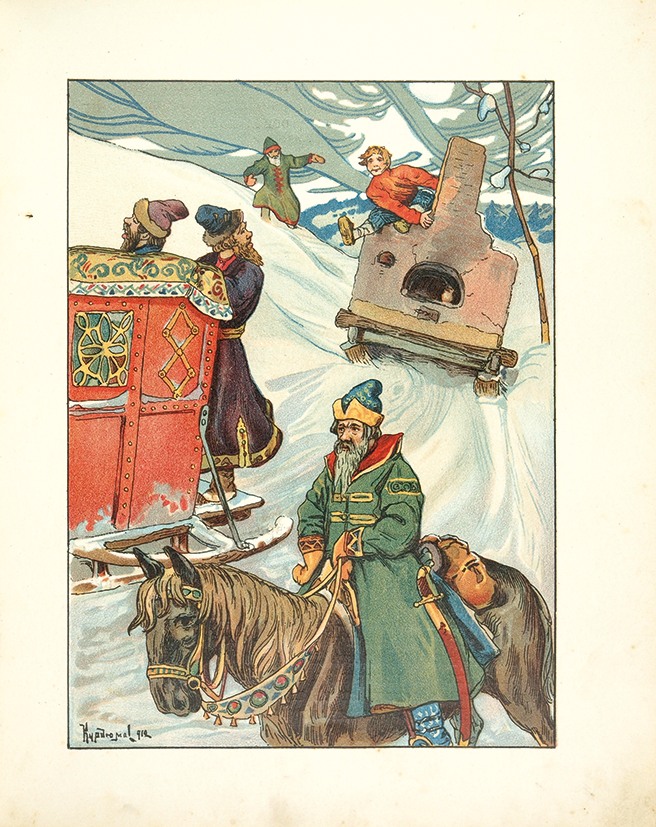









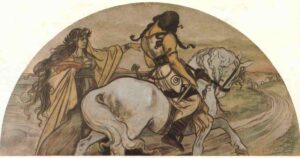
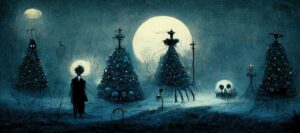
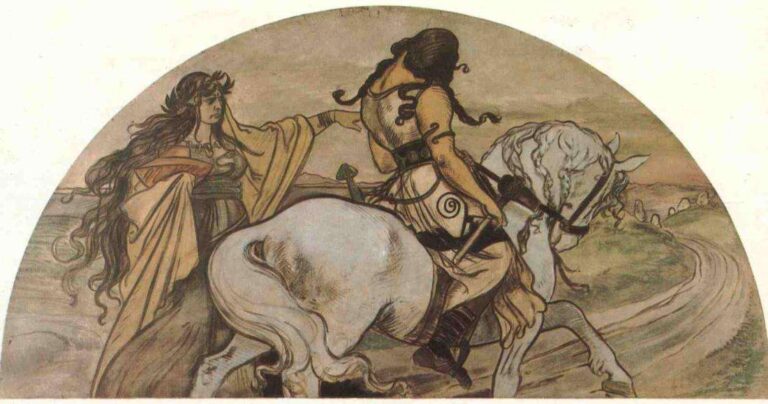
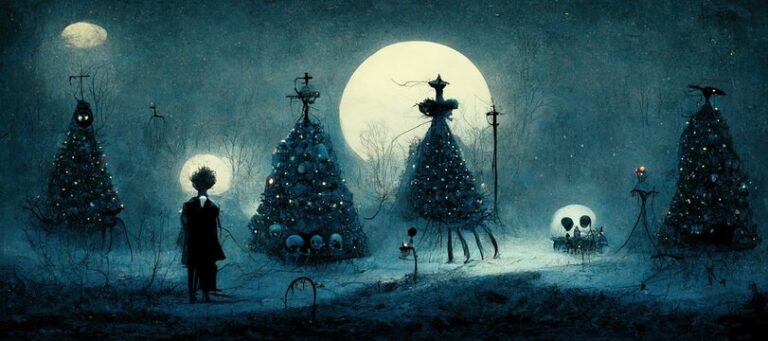
3 Comments
Pingback:The Three Princesses of Whiteland – Shelidon
Posted at 18:01h, 27 December[…] Theodor Kittelsen also illustrated this edition and his fishes are particularly good. You have already seen some of his work for the Princess On the Glass Hill. […]
Elizabeth Danals
Posted at 00:41h, 08 JuneThe last illustration you have posted is from a book called ‘After the Sun Sets’ the Wonder-Story Books. My edition is from 1953. It’s by Miriam Blanton Huber, Frank Seely Salisbury, and Mabel O’Donnell. Illustrated by Nellie H. Farnam and Mary Royt.
I hope that information helps!
shelidon
Posted at 19:22h, 10 JuneOh, thank you so much for letting me know! I’m sure it’s a gorgeous book.